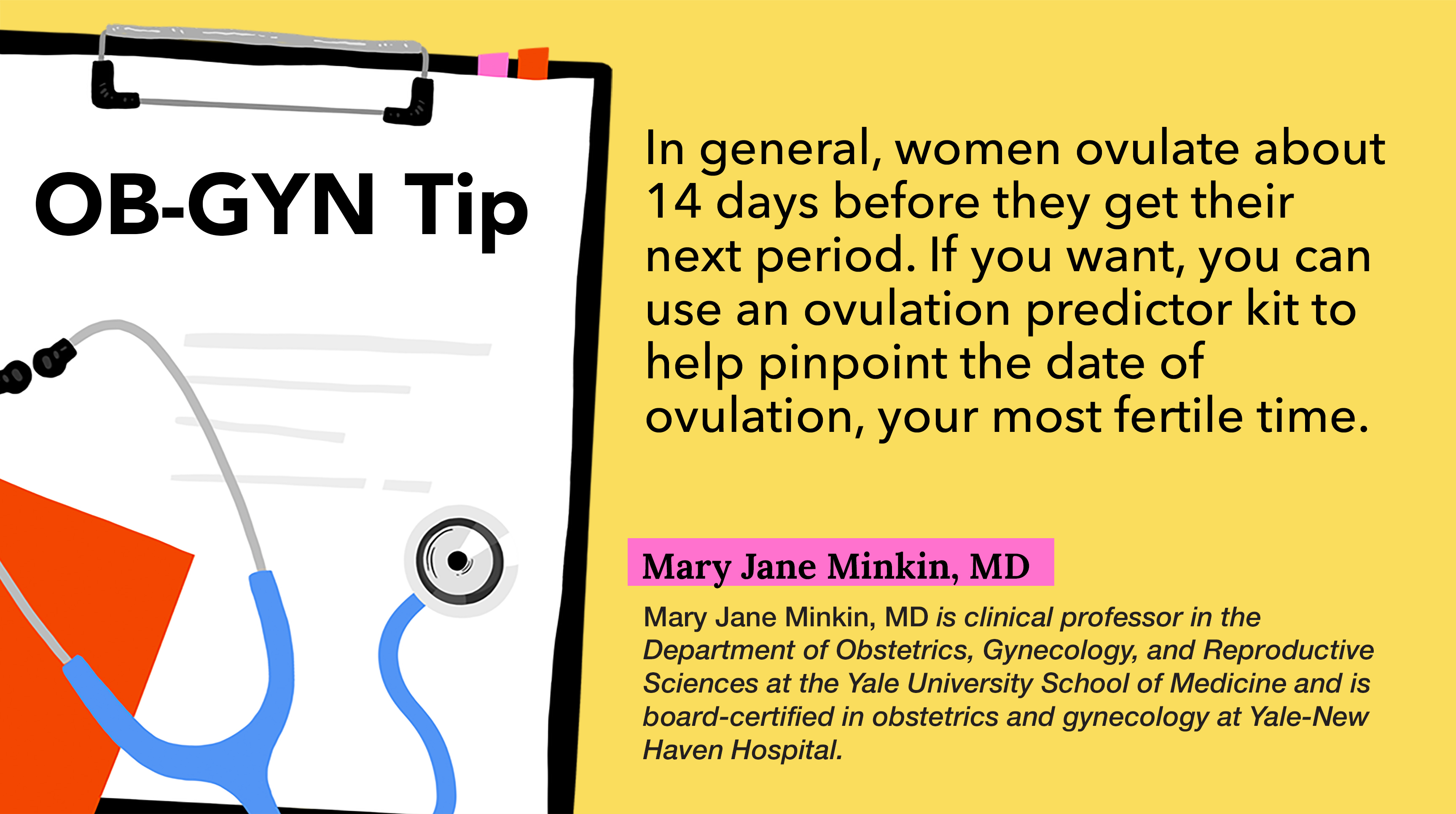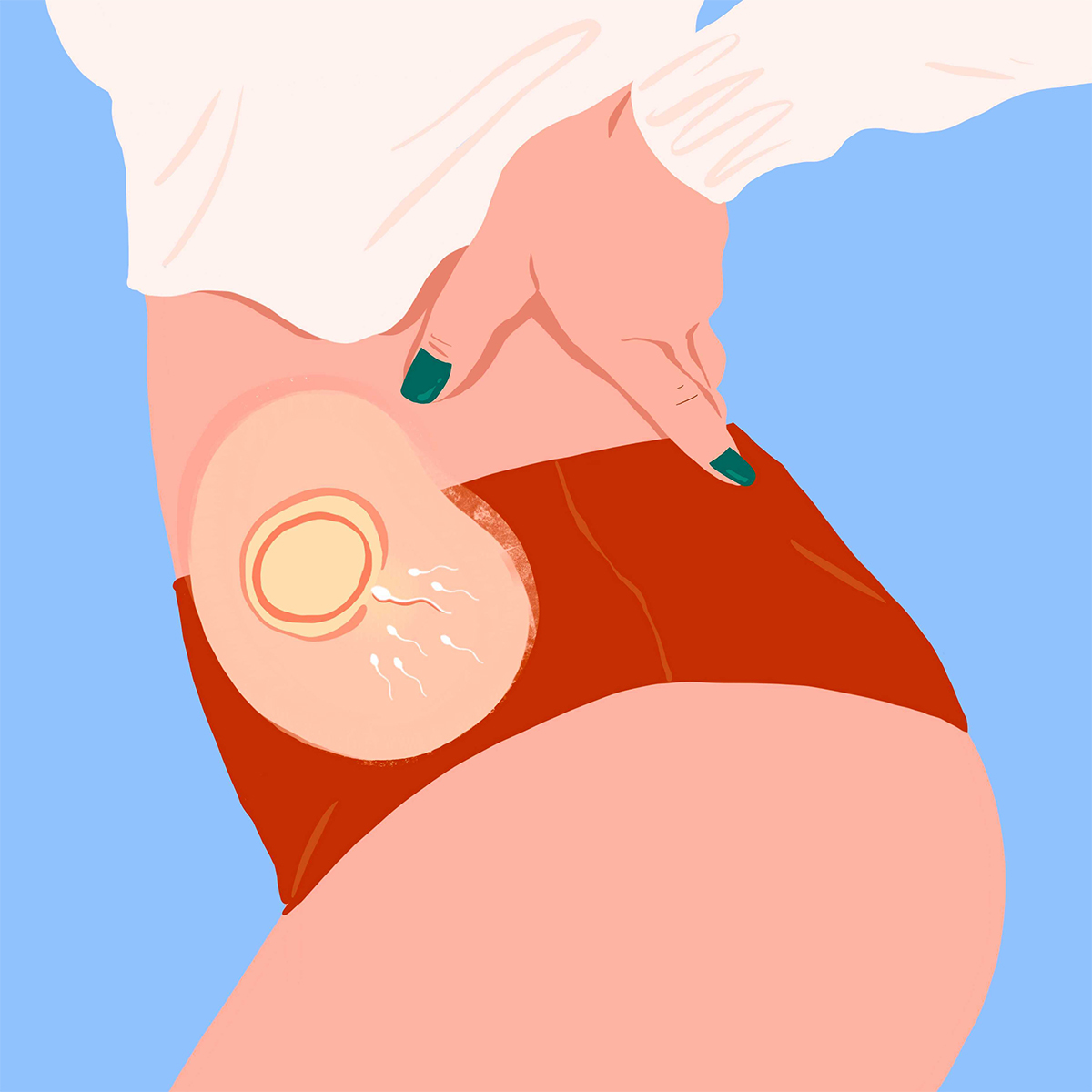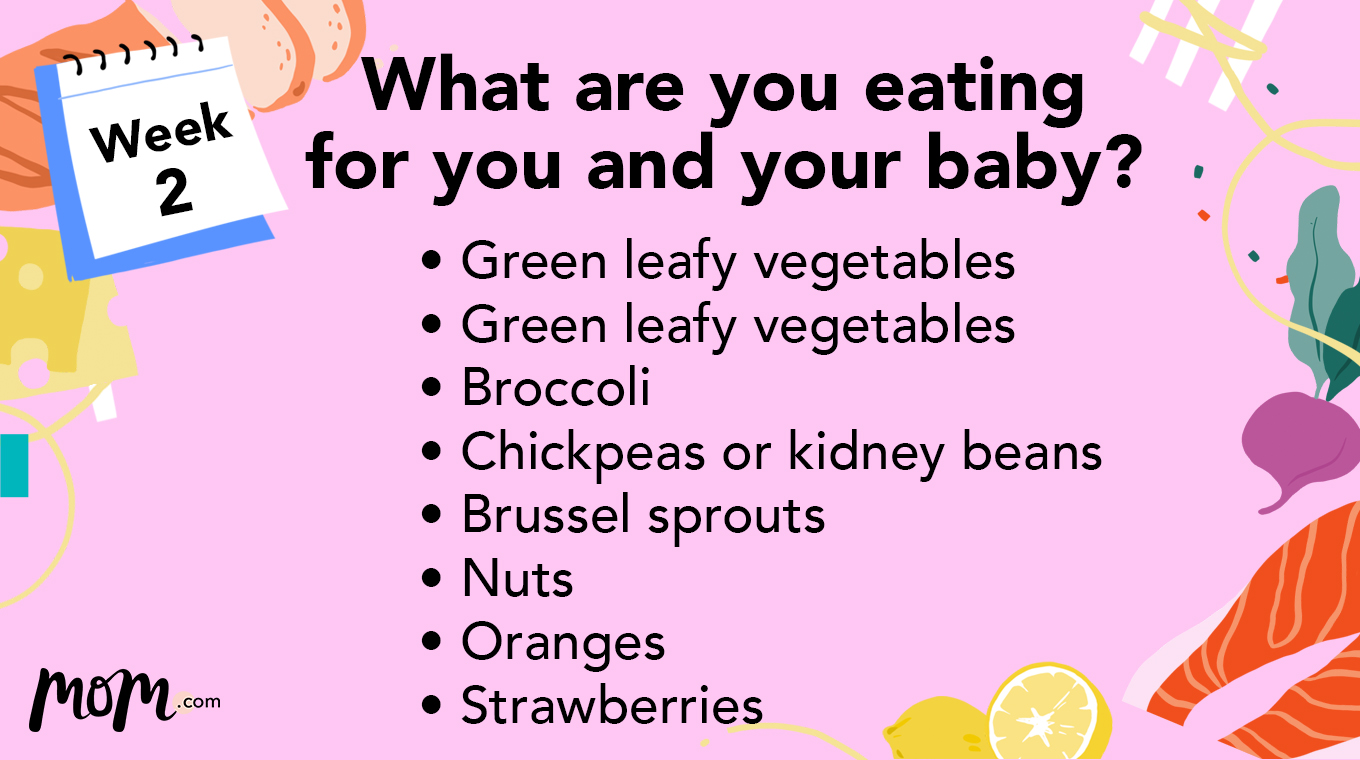
In this article
You’re 2 weeks pregnant!
Congratulations! Just like in week 1, you’re still not technically pregnant. In fact, this is likely the week you’re getting pregnant! “We always count ‘weeks pregnant’ from the first day of your last period,” ob-gyn Dr. Mary Jane Minkin told Mom.com. “You don’t really get pregnant until you have ovulated — about 2 weeks into the cycle — so we count ‘full-term’ pregnancy as 40 weeks from the first day of the last menstrual period.”
In other words, when an obstetrician says you are 6 weeks pregnant, you are actually 4 weeks from conception. Counting the weeks of pregnancy from the first day of your last menstrual period (LMP) is called your pregnancy’s “menstrual age” or your baby’s “gestational age.”
If you just discovered you’re pregnant, you’re likely around 4 to 7 weeks pregnant — when most women who find out they’re expecting after their first missed period. Feel free to skip week 3 or 4, or read on for some more information and a quick refresher.

Pregnancy symptoms at 2 weeks
Again, at week 2, your symptoms of pregnancy are akin to the symptoms of ovulation (when your body releases a mature egg follicle from your ovaries) because you’re not actually pregnant. Though ovulation only lasts about 24 hours, the symptoms of ovulation can last up to about 5 days. Don’t worry if you don’t notice any of these symptoms — you can always use an ovulation tracker like Period Tracker Period Calendar or Flo Period & Ovulation Tracker, or an ovulation kit or a calendar.
Some of the ovulation symptoms can include:
Feelings of arousal
Many studies have shown that you may feel an increase in sexual arousal around the time of ovulation. Theories for why that is include the fact that your estrogen and testosterone levels increase during ovulation and may also bump up your sexy feelings. Also, because we’re evolutionarily engineered to procreate and perpetuate the species, it is logical that during peak fertility, we would feel an increased libido.
Body temperature changes
Every person has a basal body temperature (BBT), which is the temperature of your body when you first wake up in the morning (before you make any movement). Due to the secretion of progesterone, your BBT will rise by up to 1°F in the 24 hours after ovulation and will stay raised until — if you are not pregnant — menstruation begins.
Cervical mucus changes
Have you ever seen a white milky discharge on your underwear or when you wipe while going to the bathroom? Well, that’s your cervical mucus (CM) that is mostly made of water. The consistency of this mucus will change depending on estrogen levels, and if you pay attention, it’s one way you can track your fertility and ovulation.
CM is produced by glands in your cervix and is normally thick and impervious to sperm until right before ovulation. At that point, your CM gets thinner, stretchy, and clear in color, similar to the consistency of egg whites. You may also notice more discharge than normal due to more CM volume, which can provide additional lubrication for sex and can help keep sperm alive for up to five days.
Cervical changes
If you reach a finger inside your vagina during ovulation, you would notice your cervix is higher, wetter, softer, and more open. Most people would not notice a difference unless they made a daily habit to check and recognize the subtle differences.
Saliva changes
One super-cool thing that can happen when you ovulate is that the consistency of your dried saliva can change due to estrogen and progesterone. Patterns that look like crystals or ferns can form — although eating, drinking, brushing teeth, and smoking can hide this indicator.
Mittelschmerz (ovulation pain)
Some women can feel a slight pop or spasm for a few moments — although it can also be a mild pain for a bit longer. The location often changes and is associated with the pain from the mature egg stretching the ovary as it readies for release. Due to the release of fluid from the follicle as an egg is released, some women also feel a burning sensation due to the fluid irritating the surrounding area or abdominal lining. Some also report a feeling of heaviness in their lower abdomen.
Breast tenderness
Your breasts may feel achy, heavy, lumpy, and extremely uncomfortable due to rising estrogen and progesterone levels prior to menstruation. As a result, your milk ducts are stimulated to grow, and your mammary glands may swell and enlarge.
Your ultrasound
Typically, at 2 weeks pregnant, you would not get an ultrasound because most obstetrical exams and visits for pregnancy are scheduled at about 8 to 10 weeks gestation. However, if you have been seeing a fertility specialist, your medical practitioner may conduct an ultrasound to check for fibroids, the thickness of your uterine lining, or the number of follicles in your ovaries (which would grow into eggs). If the specialist finds anything concerning, they may suggest different fertility treatments.
Your pregnant belly at 2 weeks

This is the last week of gestational age that you’re not actually pregnant. However, it is likely this is the week of conception. If you have sex during (or up to 3 to 5 days before) that fertile 24-hour period after your egg is released, 250 million sperm from the average ejaculate will attempt to swim from your vagina up through your cervix and uterus to your fallopian tubes and penetrate your egg. If you are undergoing an intrauterine insemination (IUI), the sperm is injected directly into your uterus so it has less distance to travel.
The approximately 400 surviving sperm will finally meet the egg after swimming for roughly 10 hours and work to break through the egg’s outer membrane with an enzyme. Once a sperm succeeds, its nucleus will merge with the egg’s nucleus and their respective genetic material will combine and form a fertilized egg called a zygote.
In general, the sperm will contribute 22 chromosomes and either an X or Y sex chromosome to the 22 chromosomes and X sex chromosome of the egg for a total of 46 chromosomes. The XX combination will grow into a girl (assigned at birth) and the XY combination will grow into a boy (assigned at birth). There are also X and Y chromosome variations, also known as Sex Chromosome Aneuploidy (SCA), where there are variations in the more common number and type of sex chromosomes.
Any variation from the 46 chromosomes — whether fewer or more — is called an “aneuploidy.” There are monosomies (one sex chromosome) where a person is born with only one X sex chromosome (45,X). This is a condition known as Turner Syndrome and is the only viable monosomy of a sex chromosome. (If a fetus only has a Y chromosome, it is not viable.)
There are trisomies where there is one extra sex chromosome and a person is born with 47 chromosomes like Trisomy X (47,XXX), Klinefelter syndrome (47,XXY), and 47,XYY. Even rarer are when there are two or even three extra sex chromosomes present — which typically present more pronounced symptoms than trisomies — although not always.
After fertilization, the zygote will take about 3 to 4 days to travel from your fallopian tubes to your uterus as it divides into 100 or more identical cells. Once in your uterus, it will be known as a blastocyst and 1 to 2 days later, the blastocyst will delve into your uterine lining, implant, and continue its growth and cell division.
Pregnancy tips at 2 weeks
This is your most fertile time but don’t worry if you don’t conceive on the first try. “About 15% to 20% of women will conceive that first month; 50% of women will conceive by 6 months of trying,” explained Dr. Minkin.
Try to keep your body as healthy as possible and make sure you are eating healthily. Quit alcohol, smoking, and caffeine, and get your body to a healthy weight.
Your pregnancy checklist at 2 weeks
This week, your checklist is pretty similar to the previous week. You can start preparing your body for pregnancy by doing the following:
- Stop smoking, drinking alcohol, and/or taking drugs
- Stop (or significantly cut down) consuming excessive caffeine (e.g., more than five cups of caffeine a day)
- Check with your doctor about whether your medications or supplements are safe to use during pregnancy or if they may hinder conception
- Consult with your doctor to see if you should get any vaccines, such as for the flu, COVID-19, or whooping cough (T-dap) to protect yourself and your baby
Plus, if you are trying to conceive during your fertile window, you should actively have intercourse or schedule an appointment with your fertility specialist for help with conception.
What are you eating for you and your baby?

As with last week, your body will need a continual source of vitamins and nutrients when you are growing a fetus. Ensure you eat healthily and add supplements for the nutrients you lack. If you haven’t started prenatal vitamins, now’s the time! There are now a lot more prenatal vitamins that don’t resemble horse pills and cause less stomach irritation, so ask your provider about your options.
Make sure you are taking folic acid, a B vitamin that is critical for healthy fetal central nervous system and brain development, as a supplement or through your food.
Some foods high in folic acid are:
- Green leafy vegetables
- Broccoli
- Chickpeas or kidney beans
- Brussel sprouts
- Nuts
- Oranges
- Strawberries
Since pregnancy hormones can really mess with your digestive system and cause constipation, you may also want to get into the habit of upping your fiber consumption.
Some foods high in fiber are:
- Fresh fruits
- Prunes
- Vegetables
- Lentils
- Bran cereals
When to call your doctor
Please call your doctor if you are bleeding from your vagina and concerned. While a third of pregnant women experience some bleeding during the first three months of pregnancy, half of the time there is no explanation and your pregnancy will proceed as normal. Some people also experience implantation bleeding. However, the other half of the time, the bleeding ends in miscarriage.
According to the Centers for Disease Control and Prevention (CDC), pregnant people are at a higher risk of severe illness from COVID-19 and death compared to non-pregnant people. Furthermore, pregnant women with COVID-19 are at increased risk of delivering a baby before 37 weeks (preterm birth) and other adverse ramifications.
Note: If you are visiting a medical professional during COVID, make sure to ask about the facility’s safety measures and confirm that they are following COVID protocols as indicated by the CDC.
Additional considerations: Insurance
Under the Affordable Care Act (ACA), maternity care and newborn care are considered essential health benefits — meaning that all qualified health plans in the Marketplace must cover pregnancy, maternity, and newborn care before and after birth. Plus, pregnancy is now considered a pre-existing condition and private insurance companies are not currently allowed to deny you coverage.
If you are pregnant and uninsured, you have a few options:
1) Apply for insurance through the Health Insurance Marketplace
Unfortunately, you can only enroll during Open Enrollment, which starts on November 1 of every year or during a qualifying event — which pregnancy is not considered. Because of the pandemic, an additional Enrollment period of February 15 through May 15, 2021, has been added.
However, if you missed both windows, some qualifying events that allow you to enroll during the Special Enrollment Period are: changes in household like getting married or having a baby, losing health coverage, or changing residence.
2) Check your Medicaid eligibility
Depending on your state, you may be able to apply for Medicaid. Even if you haven’t qualified in the past, many states have increased their income requirements during pregnancy in order to cover more women.
3) Check your COBRA eligibility
You may get coverage for up to 18 or 36 months if you or your spouse are recently unemployed and previously had health insurance coverage through COBRA. The premiums for COBRA are usually very high, but it may still be a better option than paying for everything out of pocket. For more information, contact your previous employer’s HR department.
4) Planned Parenthood
Depending on your local Planned Parenthood center, you may be able to get free or low-cost prenatal care.






